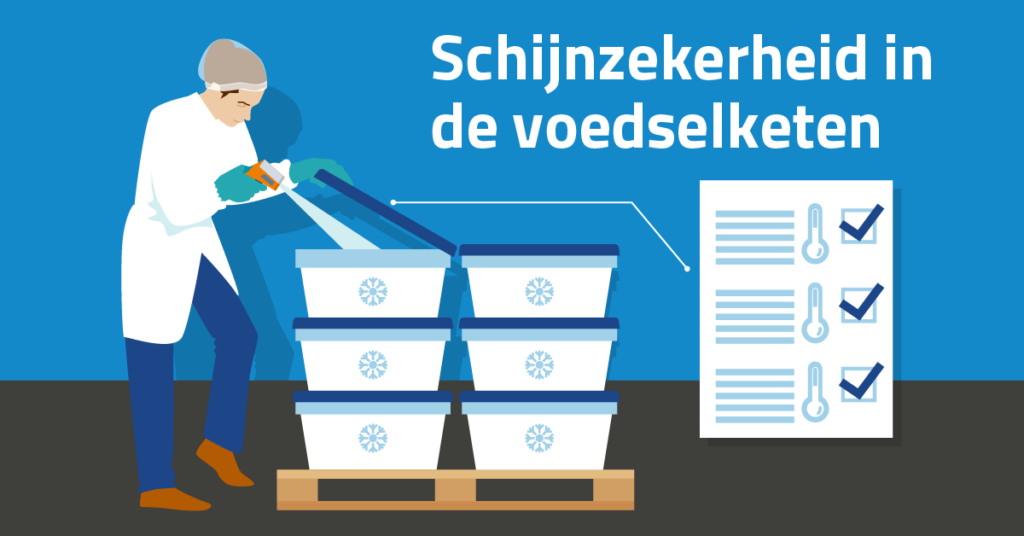Learn More

Food is hot, and what we eat is becoming more and more a reflection of who we are. This is causing a shift in the food industry toward products that add more value: products that are healthier, more convenient (take-out), more sustainable, or have a higher experience factor (certain A-brands). At the same time, recent food scandals have damaged consumers’ confidence in the food chain. On the one hand, this has led to more rules and guidelines that regulate responsible production processes, and on the other, to customers demanding more transparency. But are they getting that transparency? How certain is the quality of our food?
A Gauntlet of Rules and Regulations
Of course, there are clear rules and regulations regarding quality and reliability in the food chain, from local hygiene codes to government health and safety regulations to global IFS and BRC Food Safety Standards certifications. There are also special requirements for organic products and various local environmental restrictions and requirements for the use of refrigerants, waste disposal and transportation.
All in all, the regulatory requirements are both many and varied. And while all these regulations may help guarantee food quality on paper, putting them into practice can be a whole different matter. How can companies in the cold chain be sure that they can provide the necessary proof of compliance?
Monitoring and Burden of Proof in the Cold Chain
The increase in the number of rules and regulations also increases the levels of responsibility in the chain. This, in turn, increases the pressure on companies to provide proof of compliance. Developments in sensor technology and data exchanges are raising customer expectations of being able to know at any given moment whether the product is being kept under the right conditions. This is especially true when it comes to refrigerated products.
Recent research by VebaBox shows that the cold chain has been slow in taking on the responsibility for quality control. To ensure quality, most companies still rely mostly on specific handling agreements (75%). Packaging and temperature control are also of high importance (62%). In addition, monitoring is becoming increasingly important. Companies now monitor an average of 2.8 aspects in each chain. Temperature during transport is nearly always monitored (83%), while the temperature at the point of transfer is the second-most monitored quality control aspect (66%). Other aspects that are often measured, albeit less regularly, are the time duration of the process, color and smell, and chain breaks (such as broken seals).
Insufficient Insight Into Incidents
Is the quality assurance good enough to avoid incidents? Not always. In a process like the cold chain, with so many moving parts, there are bound to be mistakes. However, the frequency of incidents seems to be highly variable. Of the research respondents, 38% were unaware of whether incidents occurred (despite monitoring). So much for quality assurance. Other participants reported experiencing incidents once a year (49%), once a month (33%) or once a week (18%). On average, companies tend to experience incidents at a rate of around 14 per year.
Most companies also have no clear picture of the actual cost of incidents. The responses range from less than 1000 euros up to 25,000 euros per incident. (Higher costs per incident were more common in the frozen chain.) These costs don’t include the damage to business reputations and partner relationships. Clearly, regulatory guidelines and monitoring do not yet provide a reliable guarantee for actual quality.
More Awareness for Effectiveness and Quality Management
The VebaBox mission is to improve quality within the sector by applying targeted innovations. Recently, they developed a model that charts the effectiveness of suppliers in the cold chain. The model looks at elements such as leadership, procurement, processes, governance, collaboration, capabilities, monitoring and sustainability. It is also the basis for the research study among cold chain decision-makers.
Results of the research revealed that most companies in the chain are not effective enough. For instance, the sector is lagging in the area of monitoring and capabilities, which are both important aspects of quality management. The survey found that just one-third of the market was able to achieve the goals that they consider important to their business. A common characteristic of these successful companies is their very deliberate decision to move forward: they develop a strategy, invest more, and look to new technologies for solutions. Doing so brings them a lot of advantages. These leaders report having:
- Higher effectiveness
- Fewer incidents and cold chain breaks
- Higher levels of customer satisfaction
- A better-optimized process
- More focus on sustainability
The research report reveals how businesses in the food & cold chain can actively work toward greater effectiveness, quality and reliability. The report is available free of charge from VebaBox to anyone interested in the industry and can be downloaded from the VebaBox website.


